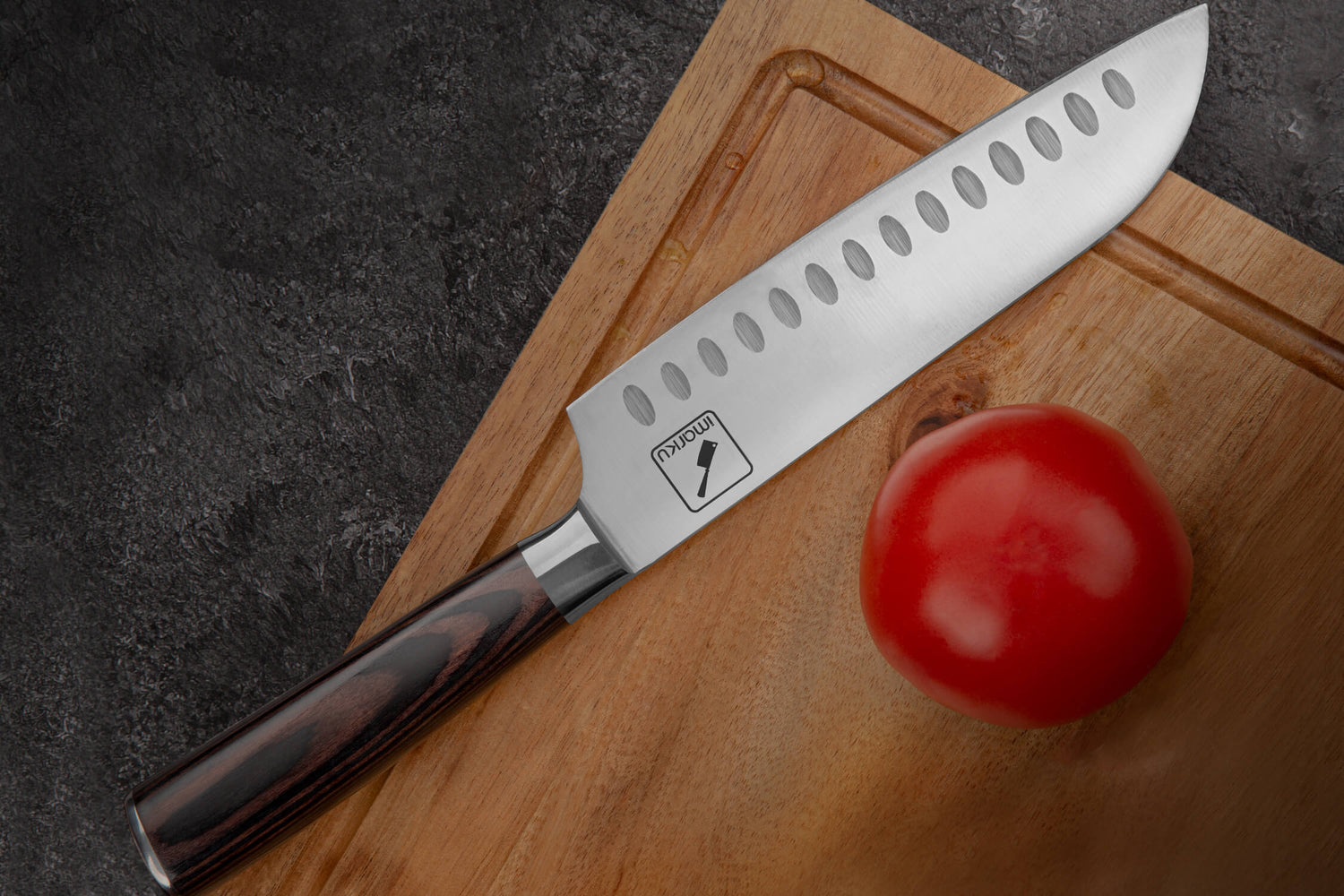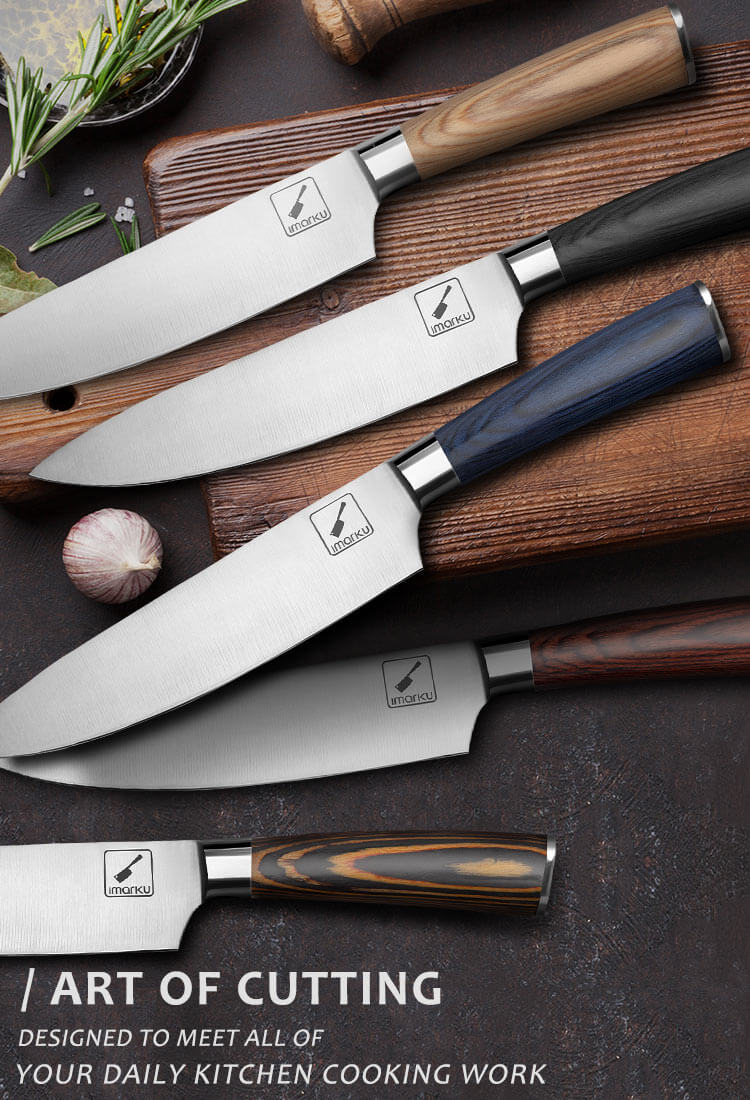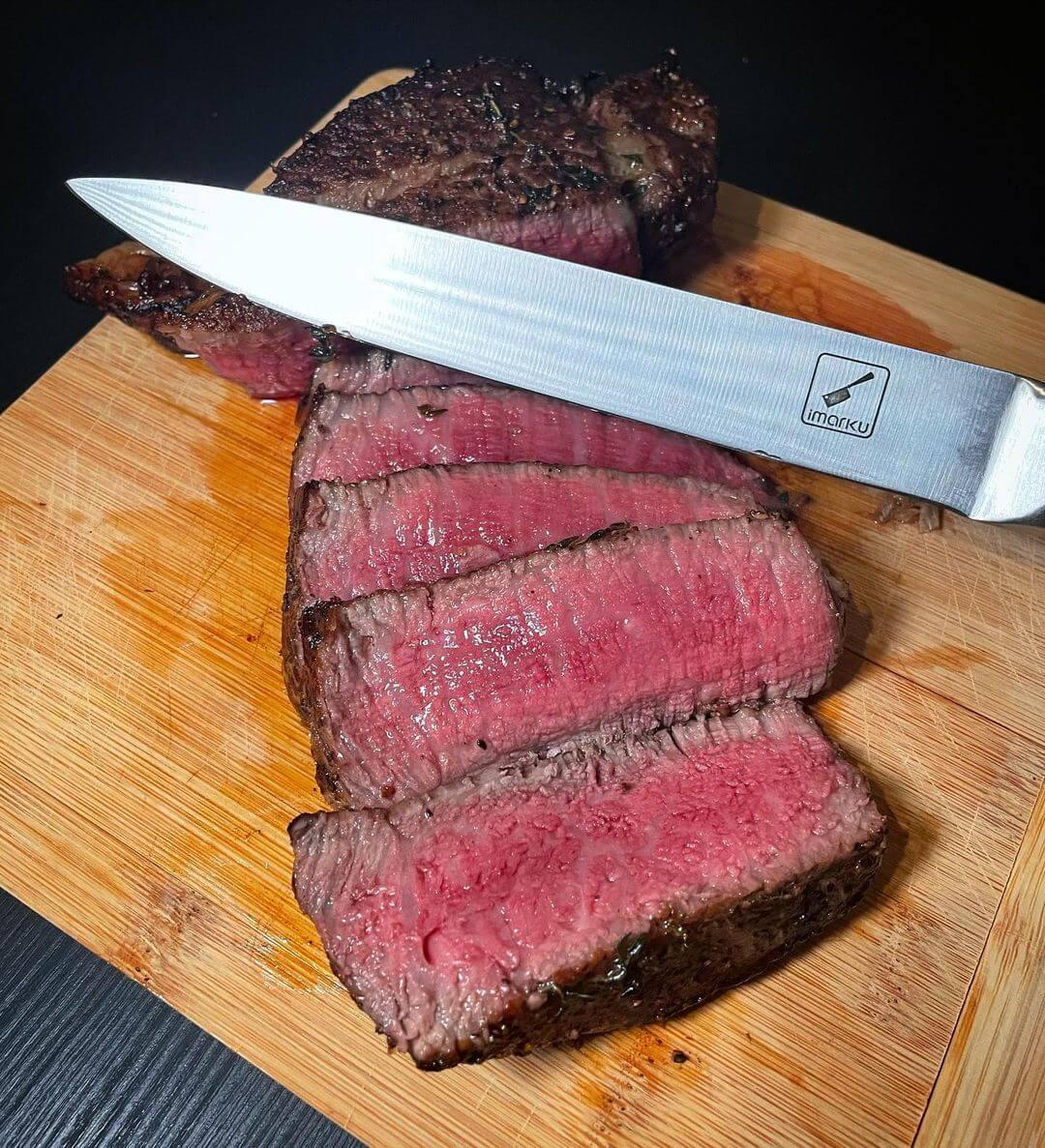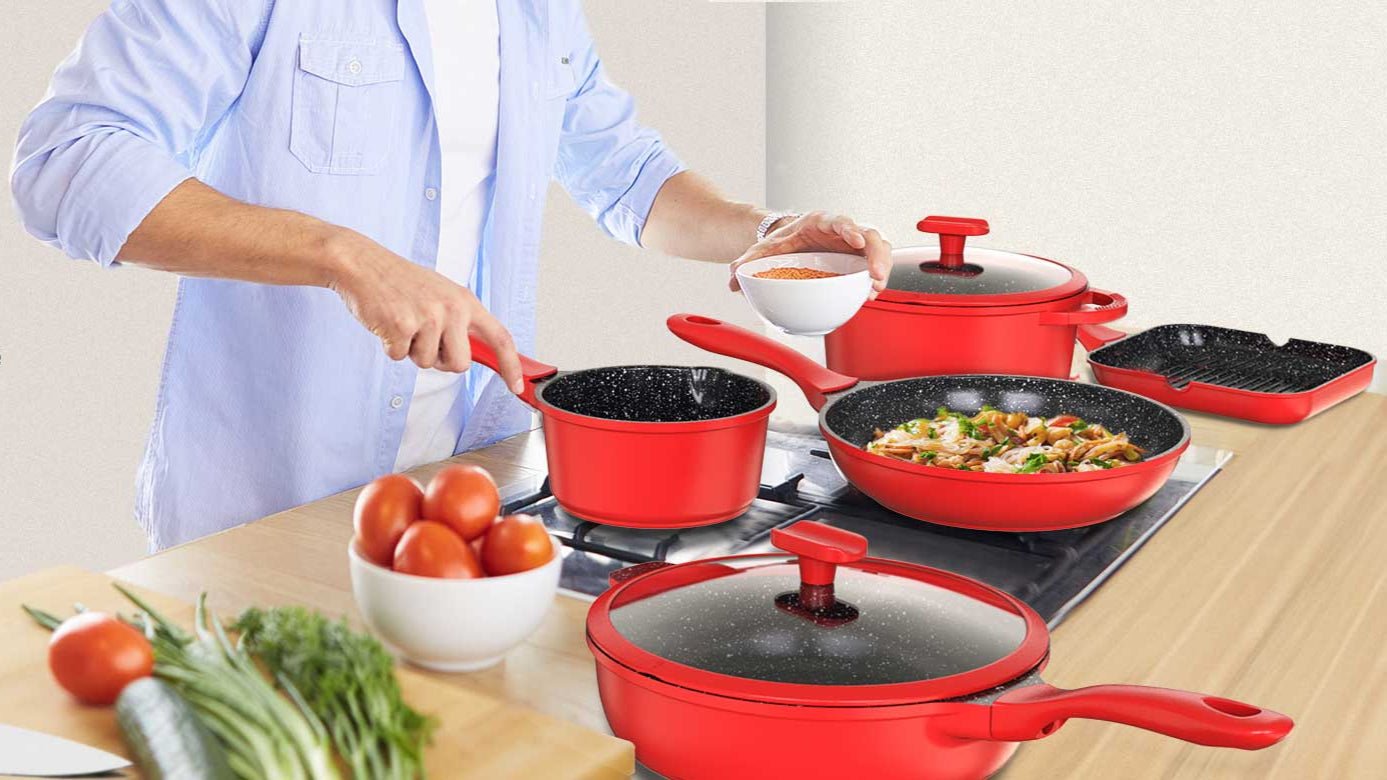TABLE OF CONTENTS
The right tool for a task makes it easier and creates better results. It’s why professional chefs and home cooks alike reach for their professional-quality chef’s knife for most of their prep work in the kitchen.
A chef's knife makes chopping more efficient
-
A sharp blade makes a chef’s knife easier to use and control.
-
The material your chef’s knife is made of will affect its performance.
-
Carbon is the key metal alloy used in quality cutlery.
Unlike a paring knife or even a bread knife, chef’s knives are designed to be multi-purpose kitchen tools. While many things in the kitchen are designed for a specific task, chef’s knives (also called a cook's knives) can chop vegetables, slice fruit, mince fine herbs, cut up meat, and more. They range in length, but 8 inches is the most popular choice for the home cook.
The tip of a classic chef’s knife has a rounded taper. It helps with the rocking action that makes chopping and slicing more efficient. By keeping that front tapered part of the knife in contact with the chopping board, you can rock the knife and make quick work of mincing an onion.
These knives are comfortable to use, and when properly maintained, have a razor-sharp blade that reduces the effort it takes to cut and chop. Knives that aren’t sharp require more force to use. They slow you down. The blade also crushes more of the food’s delicate cells surrounding the cut.
If your knife is sharp enough, it will easily cut through an onion.
You don’t have to be a trained professional chef to use a chef’s knife. The “professional” part often thrown in front of the knife’s description refers to its craftsmanship.
A chef’s knife worth buying was manufactured with the professional in mind. Home cooks use them to achieve professional results and to benefit from the versatility and efficiency that a well-crafted knife can offer.
A sharp blade gives you a high degree of control when you’re working with your chef’s knife. Chopping and cutting is more predictable, so there’s less risk of accidents. A professional chef’s knife is manufactured to be sharper and to maintain its sharpness longer.
Benefits of a Chef’s Knife
The extra sharpness of a well-maintained chef’s knife can help keep you healthier.
Take a look at your cutting board after chopping vegetables or herbs. Notice any smudges on the surface of the cutting board? It’s a sign that your knife is crushing more than cutting. A sharp knife slices cleanly through herbs, vegetables, and fruits, so you’ll keep more of what’s good for you in the food you slice.
Less effort in preparation means you’ll have more time to enjoy cooking. And if you happen to like chopping, slicing, and dicing, you’ll appreciate it even more when you do it with a chef’s knife that’s been professionally manufactured for the job.
There’s also the benefit of pride in ownership. A quality chef’s knife is thoughtfully designed to help you be a better cook through proper preparation.

Sharp Is Good, but What Else Is Important?
More than just metal determines the cutting characteristics of a professional chef’s knife. The cutting edge angle can make a difference in the blade’s sharpness. The more acute the angle of the knife blade, the sharper the edge. And different kinds of manufacturers make knives with different edge angles.
Japanese-Style Knives
Japanese knife manufacturers generally create a blade angle of 7-8 degrees on both sides of the blade, which leads to a 14-16 degree bevel. This narrow cutting angle slices easily through meat and fish without damaging the protein’s cellular structure. It also preserves texture and flavor. The harder alloys preferred by some knife-makers allow the steel knife edge to maintain this bevel.
The Japanese also have their own style of knife, similar to the chef's knife, called the santoku knife. It has a shorter blade length than the standard 8-inch chef's knife and features a sheepsfoot blade shape that’s thinner than a chef's knife.
A santoku knife may only have a bevel on one side of its blade. It's become such a popular knife that non-Japanese knife manufacturers, such as Switzerland's Victorinox Fibrox, now make them.
German-Style Knives
German knife makers prefer to add just a couple more degrees to each side of the bevel. They tend to create a 10-degree angle on each side for an overall 20-degree bevel. The actual edge or apex of the blade is still sufficiently sharp. It’s just a bit beefier and can take more abuse — perhaps in the form of powering through a frozen pork chop or an acorn squash.
German knives like the Wüsthof Classic are crafted heavier than their Japanese counterparts so the weight of the knife can help to cut through the ingredients, unlike Japanese knives, which instead rely on the extra sharpness that they get from their narrower cutting angle.























Leave a comment
All comments are moderated before being published.
This site is protected by hCaptcha and the hCaptcha Privacy Policy and Terms of Service apply.